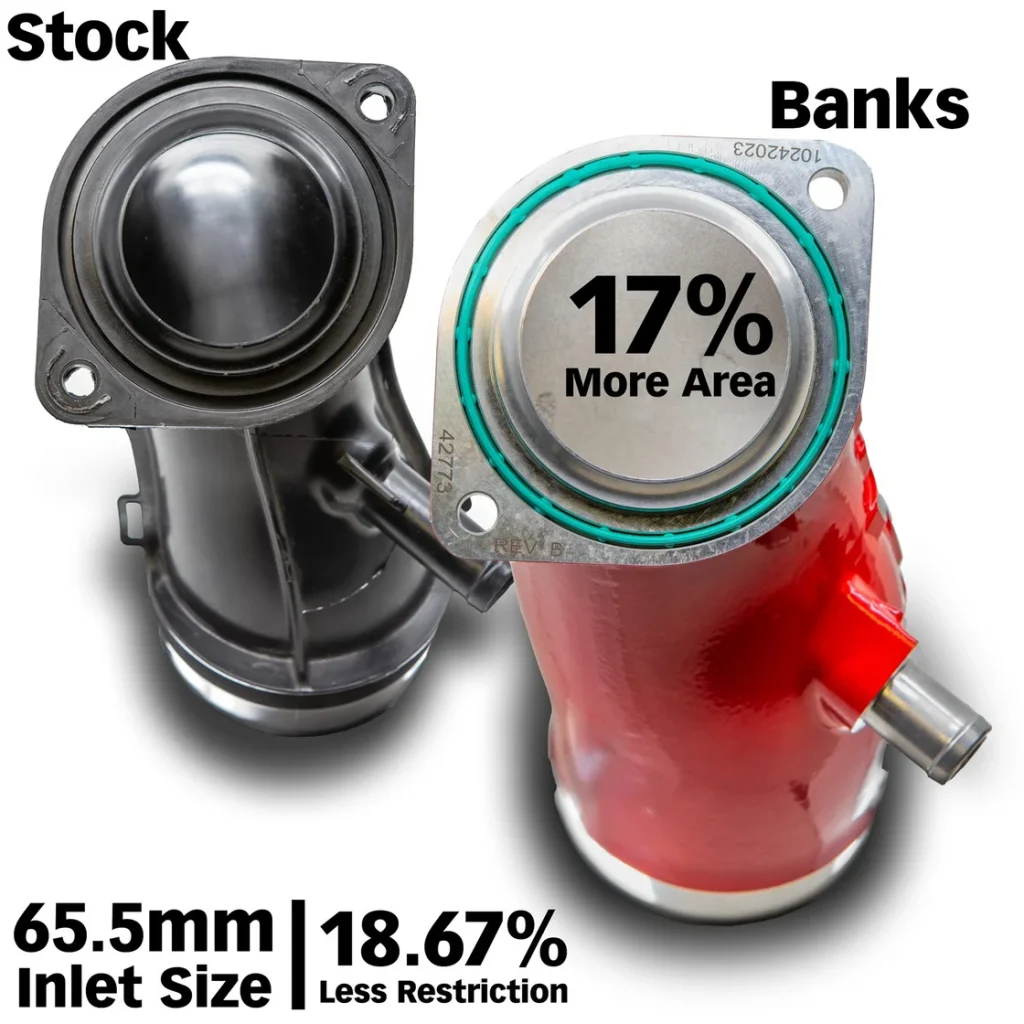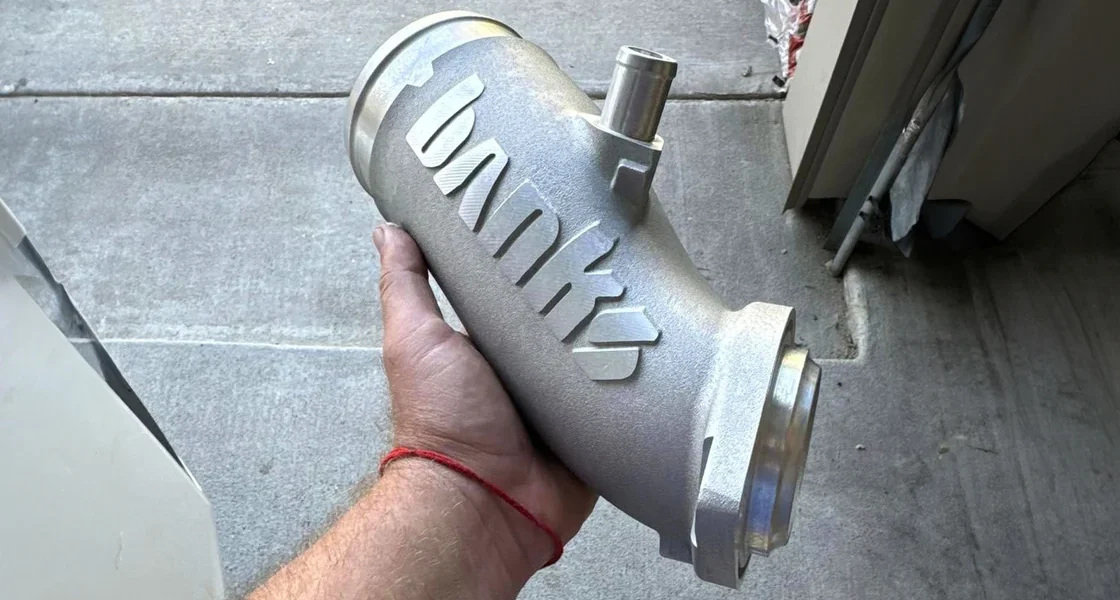No More L5P Turbo Surge!
“Well then, to those who were dramatic about my tune,” begins Tony Chumakov in his latest post within a popular 2017-2024 Duramax Facebook group. “I finally replaced my WCFab set-up and surge ring with the proper Banks turbo horn. The truck runs perfectly smooth and solid now. Finally, no more surge. (It had nothing to do with the tune). I started with a straight intake elbow with an integrated surge ring. The truck would run like sh— most of the time. Then I added an eBay surge ring to the WCFab elbow. That improved overall truck behavior, but it still wasn’t perfect. I knew I was on the right track. After that, I ordered the Banks Monster-Ram. The truck felt solid and linear I’m a happy customer. I plan to install one on my work truck as well.”
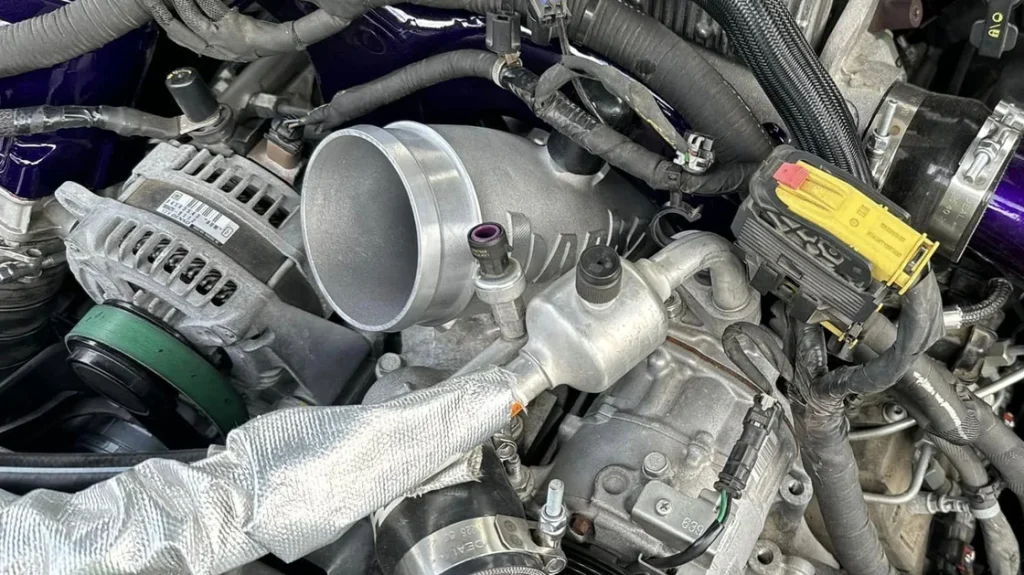
Tony’s truck suffered from turbo compressor surge because his first aftermarket intake elbow had no integrated surge protection. Upon close inspection of the Duramax L5P’s Borg Warner turbo, you’ll notice anti-surge geometry. Half of this anti-surge feature is machined into the compressor cover, and the other half is molded into the plastic elbow. Mated together, they complete the surge protection. Removing or altering half of the surge feature found in the elbow kills the entire system, which the other aftermarket elbows are guilty of.
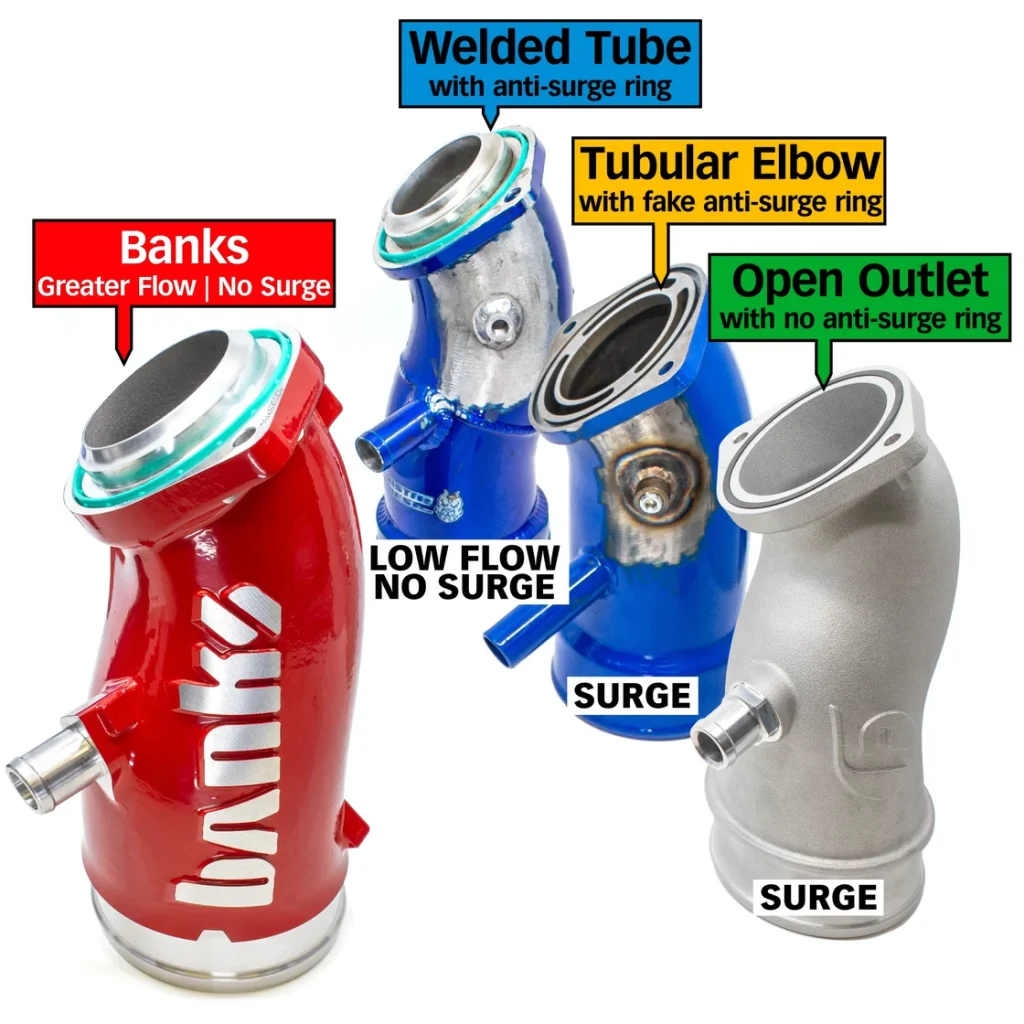
During compressor surge, air travels backward through the compressor wheel, dramatically slowing it down, then passes through a diagonal channel, fills a cavity that acts as a shock absorber, then is turned around and fed back into the compressor wheel by the anti-surge ring integrated into the intake elbow. Without this precision-engineered geometry, any aftermarket intake elbow will allow surging pulses of air back up the intake tube, fighting incoming air. Surge can range from silent to audible, violent enough to shake the entire truck. Not only does it cause a momentary loss of power, but this double-compressed super-heated air damages the compressor wheel and puts unwanted axial stress on the thrust bearing.
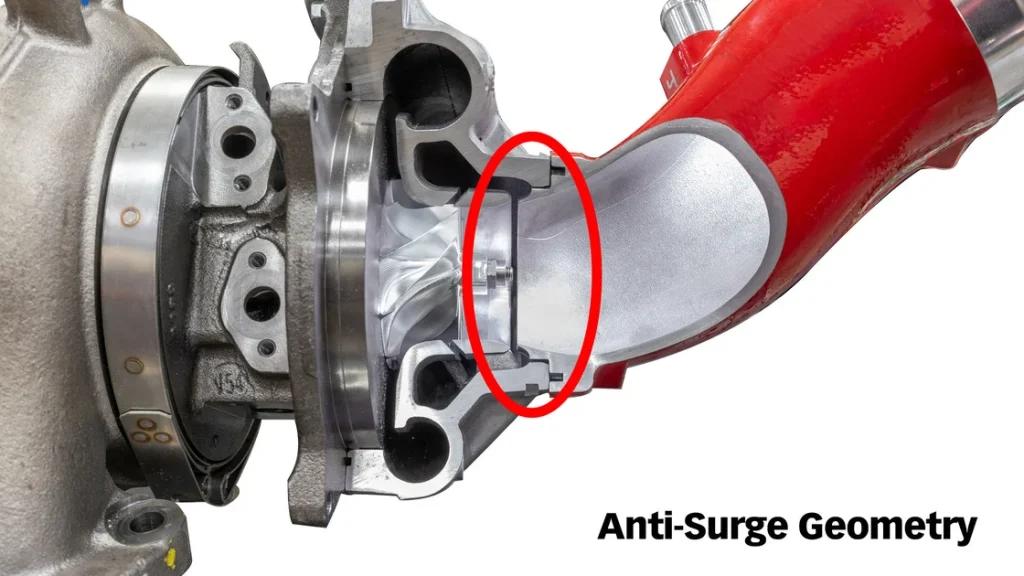
To learn more about turbo compressor surge, why it’s bad for your vehicle, and how we prevent it while improving turbo performance, visit our Monster-Ram page and keep your eyes peeled for Gale’s upcoming video.
